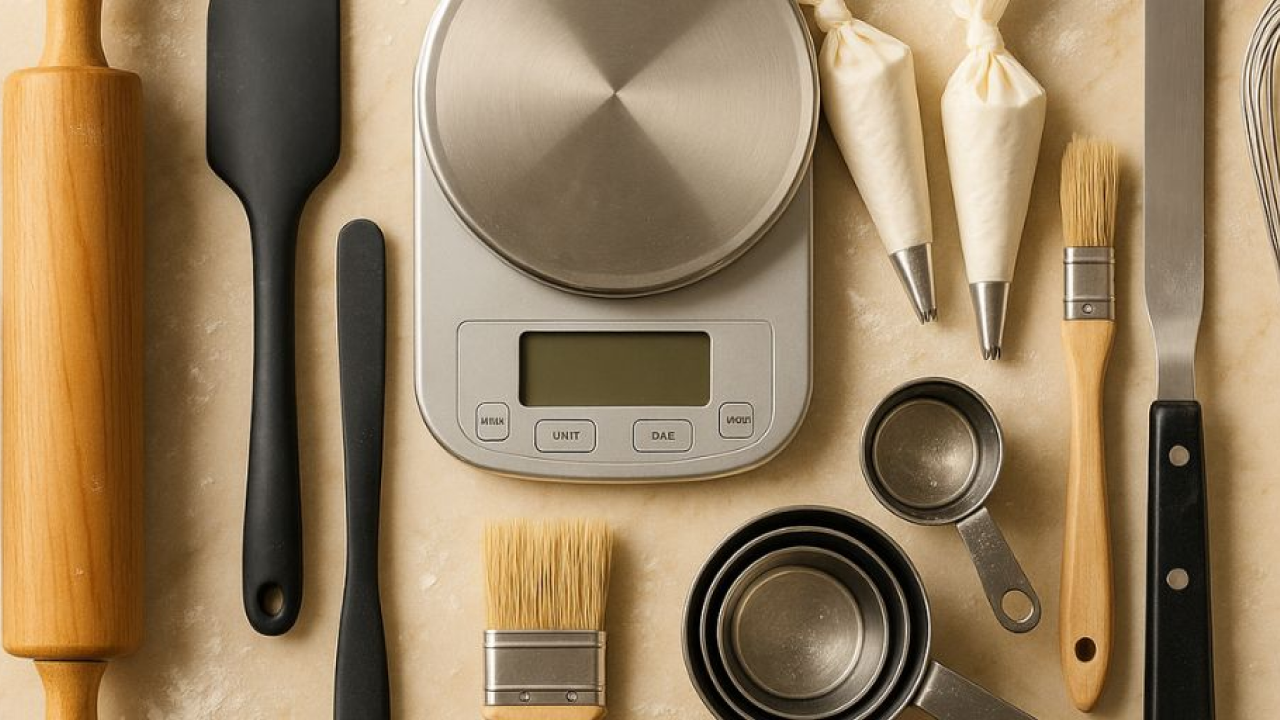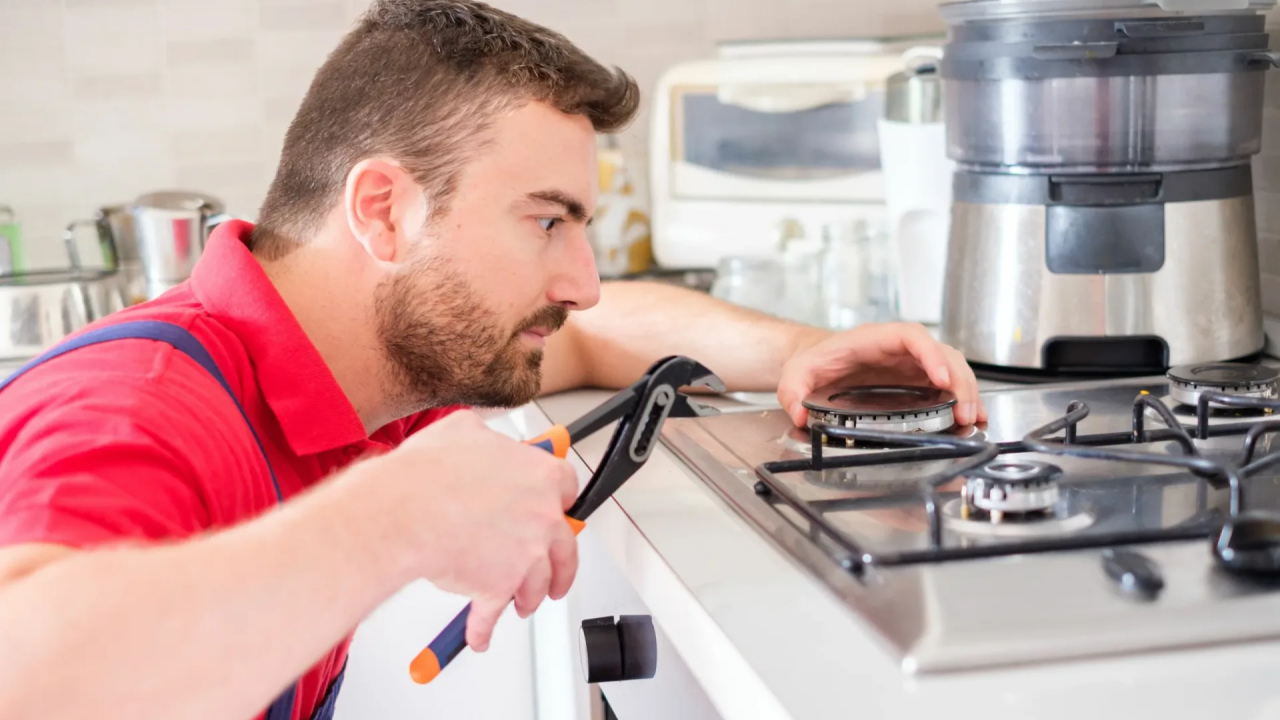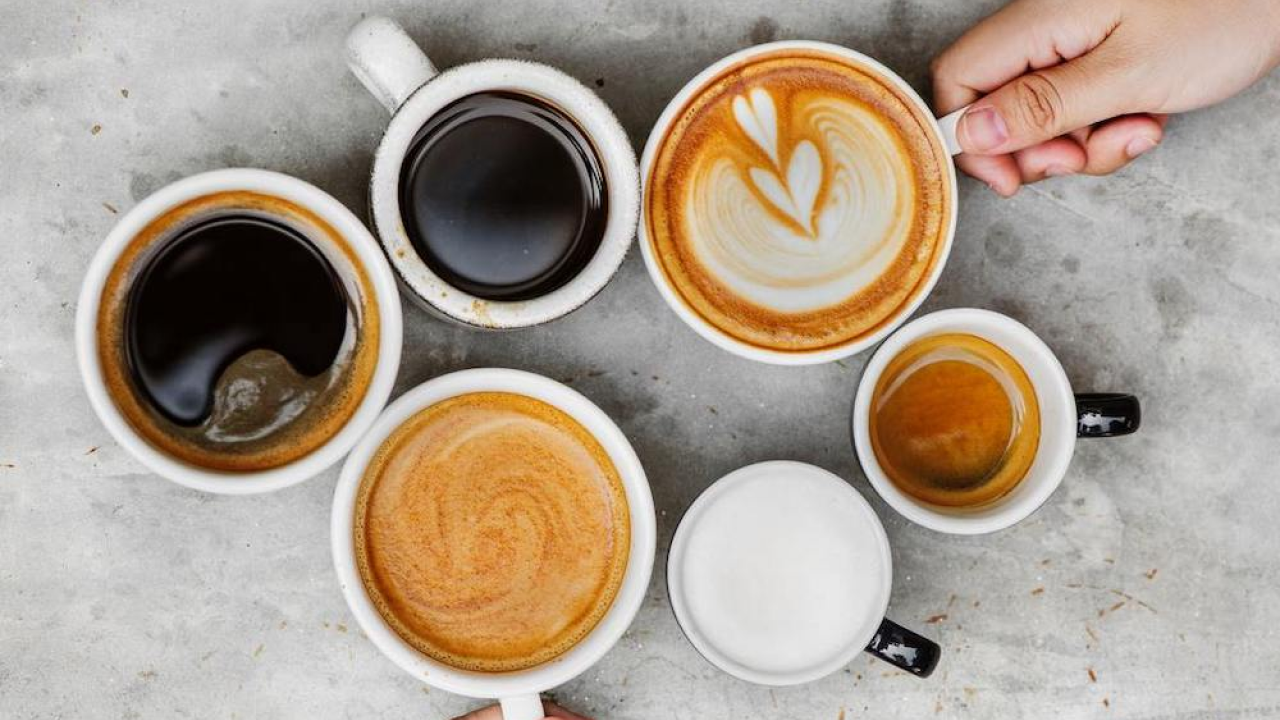Introduction
Baking is a fun and rewarding hobby. When you bake your own bread, cakes, or cookies, it feels good to eat something you made yourself. But baking is not just about mixing ingredients. You also need some tools to help you bake well. Having the right tools makes baking easier, faster, and more enjoyable , we will talk about the most important baking tools every beginner needs. We will explain why each tool is important and how to use it. This guide will help you start baking with confidence and enjoy every step of the process.
1. Measuring Tools
Measuring ingredients correctly is very important in baking. Baking is like a science. If you add too much or too little of an ingredient, your cake or bread may not turn out well. That is why you need good measuring cups and measuring spoons. Measuring cups are used to measure dry ingredients like flour, sugar, and cocoa powder. They come in sets with different sizes, like 1 cup, 1/2 cup, and 1/4 cup. To measure flour, use a spoon to fill the cup and then level it with a flat knife. This method helps you get the right amount because flour can be packed too tightly if you scoop it directly with the cup. Measuring spoons are used for small amounts of ingredients like baking powder, salt, or vanilla extract. They come in sets with sizes like 1 tablespoon, 1 teaspoon, and 1/4 teaspoon. Using measuring spoons is important because even a tiny mistake in these ingredients can change the taste or texture of your baked goods. Besides dry ingredients, you also need to measure liquid ingredients like water, milk, or oil. For this, use clear liquid measuring cups with marks on the side. Pour the liquid on a flat surface and check the level at eye height to get an accurate measurement. Using these tools will help you put the right amount of ingredients in your recipe. This makes sure your baked goods taste good and have the right texture. Baking without measuring properly can lead to cakes that are too hard, too soft, or that don’t rise well. If you don’t have measuring tools, it can be hard to bake perfectly every time. So, investing in a good set of measuring cups and spoons is a great first step for any beginner baker. They are affordable and will help you bake delicious treats again and again.
2. Mixing Tools
After measuring, the next step is mixing your ingredients. For this, you need mixing bowls, whisks, and spatulas. Mixing bowls come in different sizes. Choose bowls that are big enough to hold your ingredients without spilling. Stainless steel or glass bowls are good choices because they are easy to clean and do not keep smells. Plastic bowls can also be used but may absorb odors over time. A whisk is a tool with loops of wire. It helps to mix ingredients well and add air into the batter, making cakes light and fluffy. When using a whisk, make sure to use a bowl with rounded edges to avoid batter getting stuck in corners. You can also use a balloon whisk for incorporating more air or a flat whisk for mixing sauces. A spatula is a flat and flexible tool. It helps you scrape the sides of the bowl to get all the batter out and fold ingredients gently without breaking them. Folding is especially important when mixing whipped cream or beaten egg whites into a batter, as it preserves the air and volume. Silicone spatulas are popular because they are heat-resistant and flexible, making them perfect for scraping every bit of batter. If you want to bake often, you can buy an electric mixer. It makes mixing faster and easier, especially for thick dough or heavy batter. Stand mixers come with various attachments like dough hooks, beaters, and whisks, allowing you to mix, knead, and whip efficiently. Hand mixers are more affordable and take up less space, but may not be as powerful. Remember to clean your tools immediately after use to prevent batter from hardening. Properly caring for your mixing tools will help them last longer and keep your baking process smooth.
3. Baking Pans and Trays
To bake, you need the right pans and trays to put your batter or dough in. Baking pans come in many shapes and sizes. Round pans are good for cakes, especially layered cakes. Square or rectangular pans are commonly used for brownies, bars, and sheet cakes. Loaf pans are perfect for bread, pound cakes, and meatloaf. Cookie sheets are flat trays with low edges, designed for baking cookies evenly by allowing heat to circulate around them. Muffin tins have small round cups to bake cupcakes or muffins, helping them keep their shape and rise evenly. Before you put your batter in the pan, you should prepare the pan. This means you can grease it with butter, oil, or non-stick spray and dust it with flour. This stops the baked item from sticking to the pan and helps it come out easily. For certain recipes, especially cakes, lining the pan with parchment paper can also make removal easier and prevent sticking. The material of the pan also affects baking. Metal pans, like aluminum or steel, conduct heat well and give baked goods a nice, even crust. Glass pans heat more slowly but retain heat longer, which can affect baking time. Dark-colored pans absorb more heat and can cause baked goods to brown faster, so you may need to reduce the oven temperature slightly. It’s also important to choose the right size pan. Using a pan that’s too small can cause batter to overflow, while a pan that’s too large might result in a thin, overcooked product. When in doubt, check your recipe for recommended pan sizes.
4. Oven Thermometer
Every oven is different. Sometimes the temperature you set on the dial or digital panel is not the actual temperature inside. This difference can affect how your baked goods cook, leading to uneven baking, burning, or undercooking. An oven thermometer helps you check the real temperature inside your oven accurately. You simply place it inside the oven, usually hanging from a rack or sitting on the oven floor, and it shows the true temperature. If you find that your oven runs hotter or cooler than the set temperature, you can adjust the oven settings accordingly to bake at the correct temperature. This is especially important for delicate baked goods like cakes, soufflés, and pastries, which require precise heat to rise and cook evenly. Using an oven thermometer helps you bake at the right temperature and get consistent, professional-quality results every time. It’s a small tool but can make a big difference in your baking success. Remember to check your oven thermometer regularly, especially if your oven is older or shows signs of inaccurate heating.
5. Cooling Tools
After baking, it is important to cool your baked goods properly to maintain their texture and flavor. A cooling rack is a wire rack that lets air flow all around your cake, bread, or cookies. This airflow stops them from getting soggy by allowing moisture to escape from all sides. If you leave hot baked goods on a solid surface, the bottom can stay wet and soft because steam gets trapped underneath. Using a cooling rack helps your baked goods dry and cool evenly, preventing this problem. It also helps avoid overcooking caused by residual heat from the pan. Cooling racks come in different sizes and shapes—choose one that fits the size of your baked goods or baking trays. Some racks have multiple tiers, which are great if you need to cool many items at once without taking up too much counter space. For delicate items like cakes, it’s best to let them cool in the pan for a short time first, then transfer them to a cooling rack. This prevents them from breaking apart while still warm. Proper cooling is essential, especially if you plan to frost or decorate your baked goods, as it prevents melting or sliding.
6. Other Helpful Tools
There are several additional tools that can make baking easier and more precise. A rolling pin is essential for rolling out dough evenly, which is especially useful for cookies, pies, and pastries to ensure consistent thickness and even baking. A sifter or sieve helps remove lumps from flour, powdered sugar, or cocoa powder, while also aerating these ingredients for a lighter texture. A pastry brush is handy for spreading butter, oil, egg wash, or glazes on dough or baked goods, often giving pastries a shiny, golden-brown finish. Keeping track of baking time is crucial, so a kitchen timer whether built-in or separate helps prevent overcooking or undercooking. Other useful tools include a bench scraper, which is great for scraping dough off surfaces, cutting, or portioning sticky doughs, and measuring spoons and cups, which are vital for accurately measuring both dry and liquid ingredients. Using the right tools not only makes baking more enjoyable but also helps achieve consistent, delicious results every time.
7. Tips for Buying Baking Tools
When buying baking tools, it’s important to consider both quality and price. While cheap tools might save money upfront, they can break easily and may not perform well, whereas good-quality tools tend to last longer and provide better results. Look for tools made from safe, durable materials such as stainless steel, glass, and silicone, and try to avoid those with plastic parts that can melt or break during use. Taking good care of your baking tools by cleaning them properly and storing them safely will also help ensure they last for many years, making your investment worthwhile.
Conclusion
Baking is a wonderful skill that anyone can learn, and having the right tools makes the process easier, faster, and more enjoyable. Essential tools like measuring cups, mixing utensils, baking pans, an oven thermometer, and cooling racks provide a solid foundation to get started. Remember, you don’t need to buy everything at once begin with a few basic tools and gradually add more as you gain experience. With the right equipment and a little practice, you’ll be baking delicious cakes, bread, and cookies in no time!




